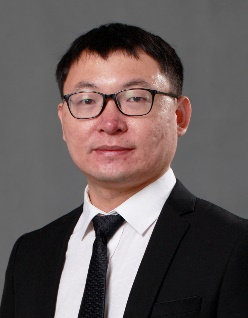
|
E-mail: mmhu@whu.edu.cn
Website:
|
Biography
Education
2007.9-2011.6 B.S. College of Life Sciences of Wuhan University
2011.9-2016.6 Ph.D. College of Life Sciences of Wuhan University
2016.7-2018.8 Post doctoral fellow, Medical Research Institute of Wuhan University
Professional position
2018.10-2019.8 Associate professor, Medical Research Institute of Wuhan University
2019.9- Professor, Medical Research Institute of Wuhan University
2022.7- PI, Taikang Center for Life and Medical Sciences of Wuhan University
Research
The innate immunity is the first line of host defense against virus invasion, and plays a key role in antiviral immune response. The host cells sense the viral nucleic acids and its replicative intermediates through the pattern recognition receptors (PRRs), which is followed by the activation of the innate immune signal pathways, leading to a series of downstream effects, inducing the expression of various antiviral cytokines such as type I interferons, inhibition of viral replication, and induction of apoptosis of infected cells. If the innate immune response is of low efficiency or out of control, it will lead to persistent viral infection, acute inflammation, autoimmune diseases, and even death. Viral infection also causes changes in nerve and metabolic homeostasis in our bodies. How the changes of neural and metabolic homeostasis affect the antiviral innate immune response in our bodies is an interesting question.
The effect of T cell-mediated tumor immunotherapy is closely related to the tumor immune microenvironment. T cells play a key role in anti-tumor immune response. Given that the innate immune response is the prerequisite basis for the initiation of adaptive immune response (B cell and T cell immunity), we try to change the tumor immune microenvironment by adjusting the innate immune response of the body to improve the efficacy of tumor immunotherapy.
Therefore, our laboratory conducts research on the antiviral immunity and the anti-tumor immunity, aiming to discover new key regulatory molecules of antiviral immunity and anti-tumor immunity, which will contribute to new drug target development for the treatment of infectious diseases, autoimmune diseases or tumors
Representative Publications
1. Endocytosis triggers V-ATPase-SYK-mediated priming of cGAS activation and innate immune response. Yang YL#, Cao LB#, He WR#, Zhong L, Guo Y, Yang Q, Shu HB, Hu MM*. PNAS. 2022. 119(43):e2207280119.
2. Modulation of innate immune response to viruses including SARS-CoV-2 by progesterone. Su S, Hua D, Li JP, Zhang XN, Bai L, Cao LB, Guo Y, Zhang M, Dong JZ, Liang XW, Lan K, Hu MM*, Shu HB*. Signal Transduct Target Ther. 2022. 7(1):137.
3. VRK2 is involved in the innate antiviral response by promoting mitostress-induced mtDNA release. He WR, Cao LB, Yang YL, Hua D, Hu MM*, Shu HB*. Cell Mol Immunol. 2021.18(5):1186-1196.
4. Innate Immune Response to Cytoplasmic DNA: Mechanisms and Diseases. Hu MM* and Shu HB*. Annu Rev Immunol. 2020.38:79-98.
5. Virus-induced accumulation of intracellular bile acids activates the TGR5-b-arrestin-SRC axis to enable innate antiviral immunity. Hu MM*, He WR, Gao P, Yang Q, He K, Cao LB, Li S, Feng YQ, Shu HB*. Cell Res. 2019. 29(3):193-205.
6. Cytoplasmic mechanisms of recognition and defense of microbial nucleic acids. Hu MM*and Shu HB* Annu Rev Cell Dev Bi. 2018. 34:357-379.
7. Innate immunity to RNA virus is regulated by temporal and reversible sumoylation of RIG-I and MDA5. Hu MM, Liao CY, Yang Q, Xie XQ, Shu HB* J Exp Med 2017. 214(4): 973-989
8. Sumoylation Promotes the Stability of the DNA Sensor cGAS and the Adaptor STING to Regulate the Kinetics of Response to DNA Virus. Hu MM, Yang Q; Xie XQ; Liao CY, Lin H, Liu TT, Yin L, Shu HB* Immunity 2016. 45(3): 555-569